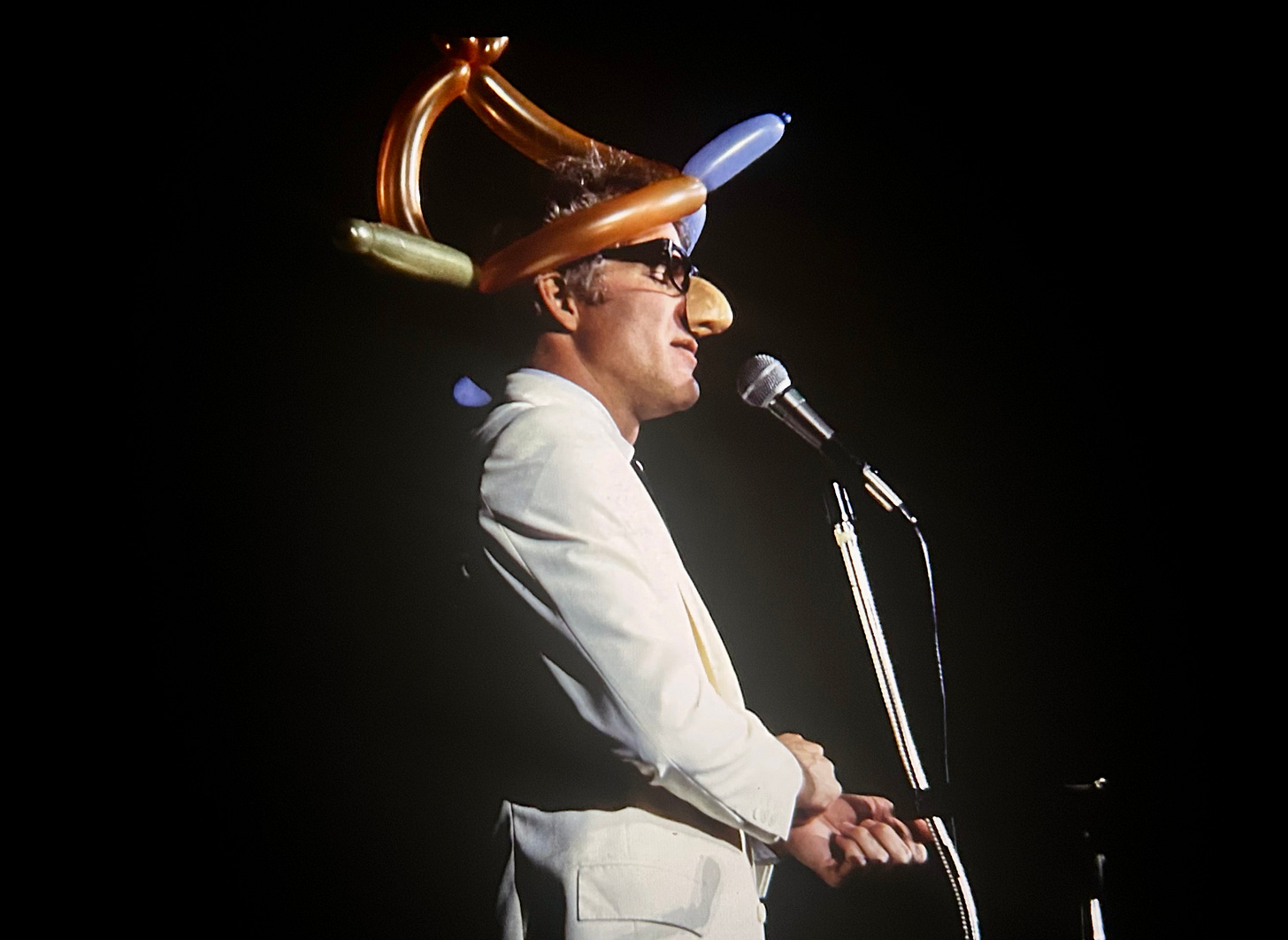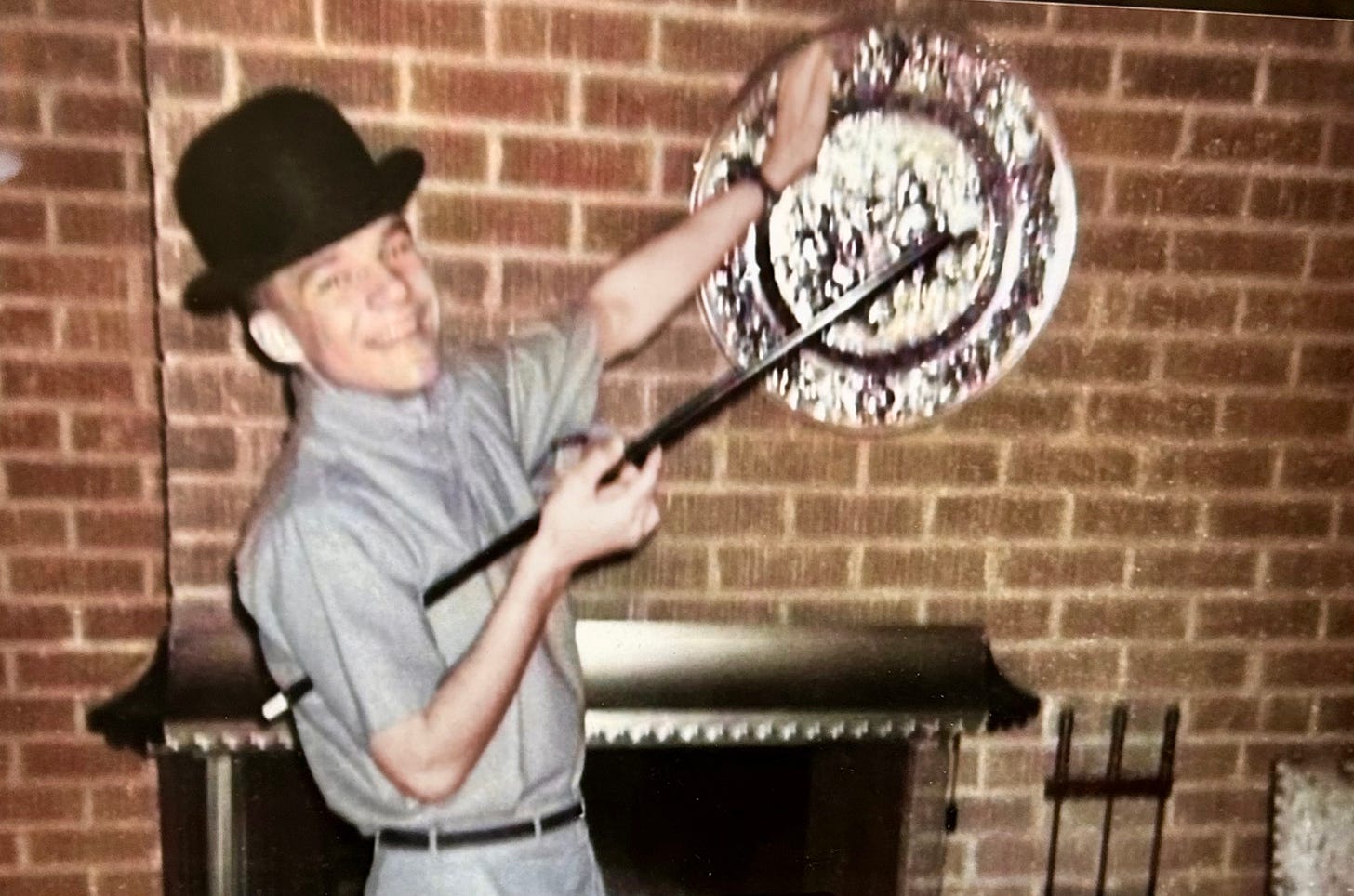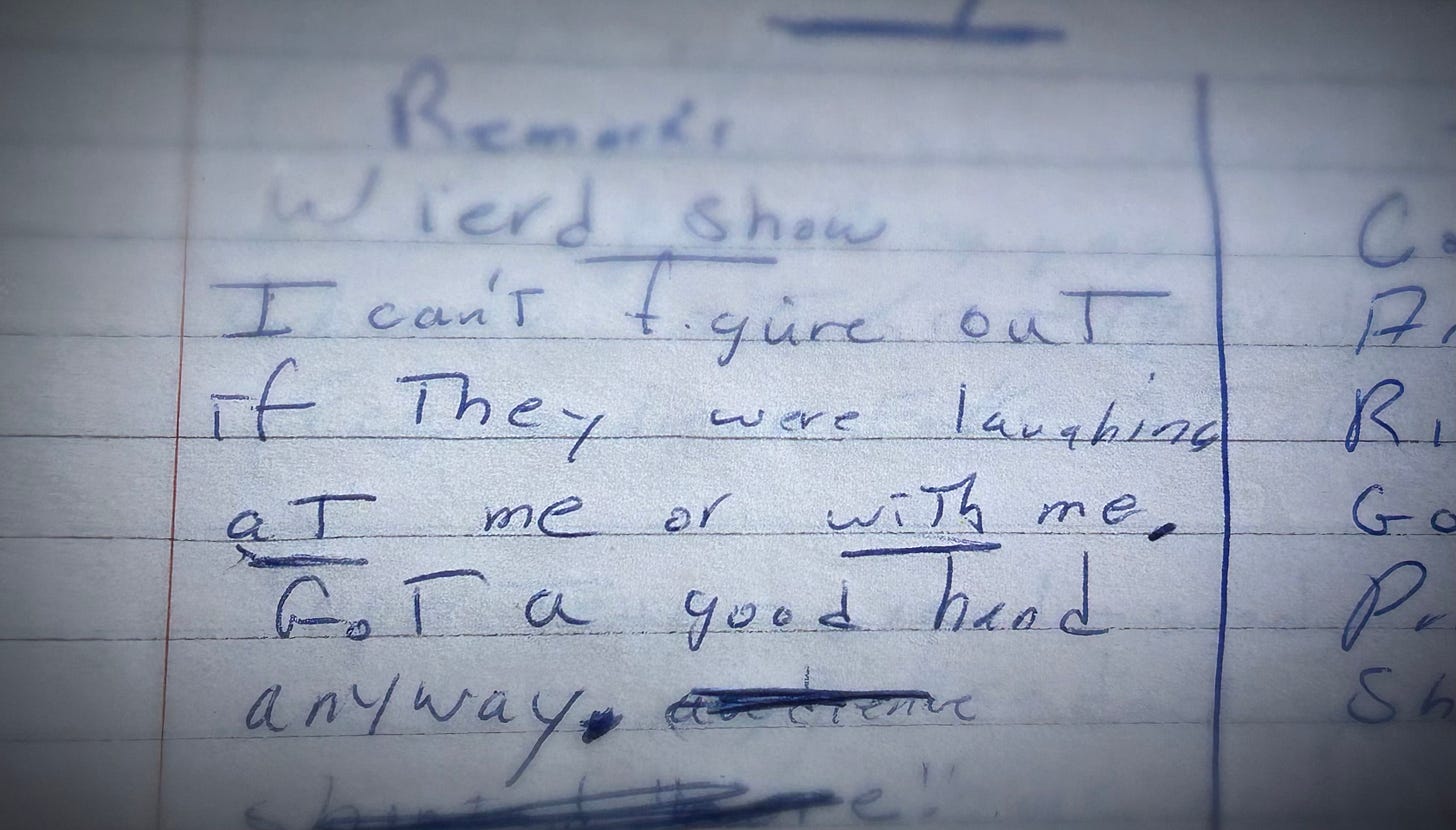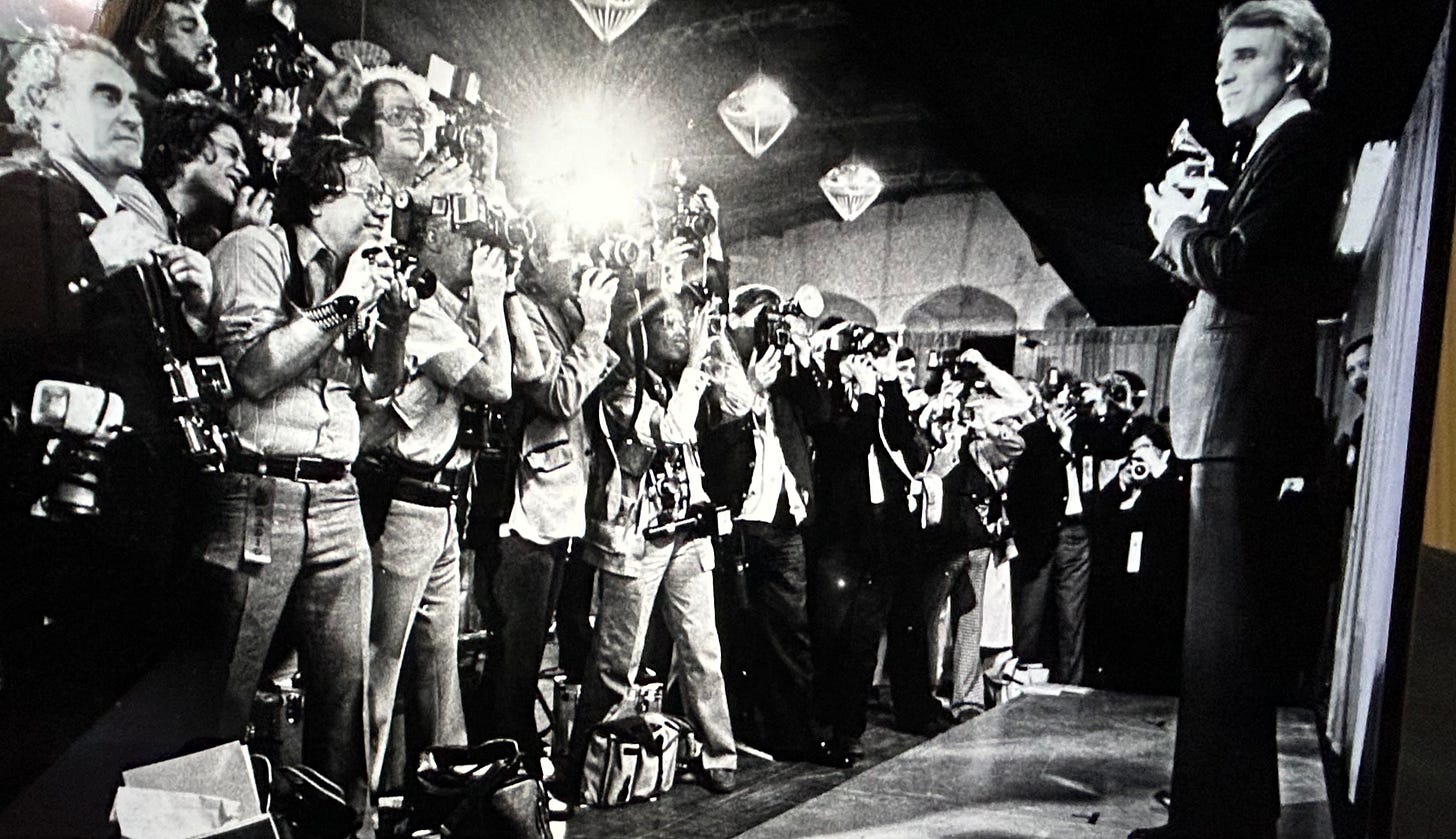Hidden Lessons: Steve Martin: "I had no talent, none."
How the first stadium comedian created a legendary career out of whole cloth — and something else...
In 1967, just a week after Steve Martin was hired as a writer for The Smothers Brothers Show, he completely freaked out. He wrote the following in his journal:
“Well, here I am. Alive. Now what do I do? Two days ago, I went through what was the worst experience of my life: Fantastically rapid palpitation of the heart accompanied by fear. I felt very detached from the world. No past. Only a distant present. I was very disjointed at work. I could not talk without stumbling over words. I had thoughts of quitting.”
He may not have known what to do then. And we’ll come back to that crossroads moment shortly. But when Steve was just a little kid, he knew exactly what he wanted to do:
“I really just wanted to be on stage. When I saw a stage, my eyes went wide. I just could see myself up there. But, I guarantee you, I have no talent. None. So I had to do a workaround to get on stage.”
Steve’s father wasn’t too nice to him. He got the brunt of the yelling in his home. But once he was outside of the house and around entertainment, he became happy. The “workaround” he sought was learning how to do magic. Steve bought a few tricks from a magic shop, then got up on stage and said “Good evening, ladies and gentlemen!” He was in show business.
When he was about 15 years old, working at the Birdcage Theater at Knott’s Berry Farm, he would throw corny jokes into his magic act. They got a few courtesy chuckles from the crowd, but Steve knew he wasn’t very good. Still, he decided that there was more career potential in comedy than magic, even if it didn’t come naturally to him:
“I’d often hear ‘just be yourself.’ But who knows who their self is? I don’t. But you can define a personality for yourself, and become that on stage. You can be what you choose to be.”
Steve Martin had to experiment a lot to eventually become what he would become. His sense of humor was totally different from the political stuff that was popular in the 60s. Lots of people didn’t understand it. Many still don’t. Steve could see that the culture was changing in the 70s, and he asked himself one question:
“What would make people want to see this again? What would make them go home and talk about it? Even if it was just, ‘I just saw the weirdest thing,’ you know? A comedian who thinks he’s funny, and isn’t. I thought there was something there.”
There was something there, but it was still so rough that it wasn’t always clicking. In fact, after he opened for Ann Margaret in Las Vegas in 1970, he came back to his dressing room and found all of his stuff in boxes sitting outside of the room. He had supremely bombed.
“I got nothing but bad reviews: ‘The worst thing to ever happen to American comedy.’ I remember that one. But I liked it, and I just wanted to work.”
Steve talks about all of this in the recent Apple documentary, STEVE! During that brutal anxiety attack at age 22 that he described during his first week on Smothers, he soon came to an epiphany:
“I drove home, and realized that I am pretty fucking great. I have a good job. I have a creative job. I have a good act. An artistic act. I have a mind. I decided to think of my work as an end, rather than happiness as an end. That is a good idea.”

That quote from Steve’s journal instantly reminded me of something the great Viktor E. Frankl wrote in Man’s Search for Meaning:
“Success, like happiness, cannot be pursued; it must ensue… you have to let it happen by not caring about it.”
And that’s how it happened for Steve Martin. He ended up creating a singular character that he described as “an overly confident idiot.” He was doing his own unique parody of show business — 25 years before The Larry Sanders Show.
Jerry Seinfeld, who was a teenager when Steve was exploding in the 70s, remembers it this way:
“This guy was up there and getting people so happy. He’s up there as most idolized comedian ever.”
Steve went on The Tonight Show and did a full routine ripping cheeseball entertainers. Sammy Davis, Jr., who was already on the couch — and was about as close a match to the caricature as anybody — literally walked over to centerstage and hugged Steve a second after he’d finished. Then Johnny Carson said:
“That’s five or six minutes of the funniest thing I’ve ever seen in a long time. Really, that’s super.”
Most folks wouldn’t know it, but becoming that funny took a very “long time.” There was nothing natural about it. Near the end of Part I of STEVE!, the “wild and crazy guy” distilled it down:
“An act is built. I mean, I literally did my act for 15 years before it clicked.”
Because I’ve been a huge fan of Steve Martin since I was 13 — back in 1970 — it was fascinating to see how his epic act was developed over time. You can hear it in the older clips. Even pauses between jokes. You can hear how his voice changes just by tiny little bits on a word here and there. You can see what he threw away, what he kept, and how he perfected it.
One night when he was guest hosting for Carson, Ed McMahon presented Steve with his first Platinum Gold Record — the first comedy album to ever sell more than one million copies. He would eventually sell over 9 million. Upon hearing the news, Steve wrote one word in his journal: “Finally!”
Toward the end of the episode, we hear the 79-year-old comedian commenting on his unlikely journey:
“I look back at what an odd life. My whole life is backwards. How did I go from riddled with anxiety in my 30s, to 79 and really happy? How did this happen.”
It happened because Steve Martin kept working. He kept taking risks. He kept on trying. He just kept on going.
In August of 1980, Steve Martin did his final live show. He was the biggest standup comic in America. The next year he had moved all of his time and effort into making movies. Another segment of his legendary career was under way.
But that is a story of hidden lessons for another day.










His autobiography is one of the best I’ve ever read. He reads the audiobook.
Love him. I just saw the documentary Steve! and it was so inspiring.